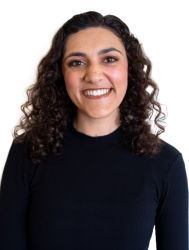Expert can be found in many scientific fields, and include many variations of disciplines. Some injuries may be sufficiently analyzed by an amateur even including trial testimony. But in complicated and detailed matters an expert with many years experience and specific education and training, on the subject matter may become crucial.
Injuries do not occur in and of themselves. They required a mechanism which includes the force required to damage bones, soft tissue and muscle, etc. an attorney would not need to present a safety engineer or biomechanical engineer to explain how someone may have been broken foot when a heavy object fell on it but an expert would be required if the injury were to occur while operating a vehicle, etc.
The expert should have the training, education, technical background and work experience in order to opine credibly on the subject. In the case of an injury to a vehicle operator or occupant requires detailed analysis, especially if the speed involved in the impact was low. An expert in accident kinematics is someone who would be needed to focus on the movement of the human body and its components without considering the force. The training of experts may have some minor crossover of training, but the important training on a specific matter, must be the top priority when experts are selected.
Biomechanical experts study forces which cause injury and the mechanisms of injuries, while the occupant kinematics expert studies the movement of the occupant without regard to forces. The biomechanical expert is trained in engineering as well as human anatomy. Many of the most popular experts who are hired have biomechanical backgrounds; however there are still many experts who testified on injury cases who do not. It is clear that experts in the future who are hired relating to injury mechanism problems including injury causation will have biomechanical and kinematics training which would include engineering and anatomy.
Medical training is not necessarily the optimum choice for an expert since medical schools do not provide training in injury mechanisms they concentrate on diagnosis and treatment. A trauma doctor who has treated many accident victims of the nature of the injury in question may be a good choice if the doctor can testify to the mechanisms and calculate forces involved. Many attorneys and users of experts look for persons with the most experience and most appropriate credentials relating to the subject at hand. The attorney will be looking for someone to prove the causation of the injury through the expert�s background, facts of the case and the characteristics of the injury.
Some cases may not involve the causation of the injury since it may not be an issue but the attorney may decide to hire an expert to show the mitigating injuries had the injury mechanisms be different.
The causation of the injury must be proven and the level of the injury determined based on a reasonable scientific conclusion. All cases have various levels of provability and the attorney must be made aware as early as possible by the expert what the downsides and probabilities of injury are.
In cases where injury causation may not be disputed the attorney may still obtain an expert to offer testimony on injuries where multiple impacts or ejected occupants are concerned. The attorney obviously will need to assess the injuries and obtain appropriate expert testimony relating to the mechanisms and calculated forces of specific injuries. Injuries occur in both low speed and high speed impact but the injury patterns could be quite different based upon the individual and the dynamics of the vehicle. Different types of mechanisms include damage from roof crush, side impacts, rollovers etc. While these vehicle dynamics may occur all injuries for a specific dynamic may not the same. It would be the injury biomechanical expert to determine and calculate the forces relating to specific bodily injuries based on published studies and experiments.
Modern vehicles are manufactured with "crush zone" which are necessary in the protection of occupants. The amount of crush may not indicate the severity of the force and the occupants but may in fact dramatically reduce such a severity. During the analysis by the biomechanical expert personal data of the occupants unnecessary in order to create a baseline and attempt to match up the anthropomorphic data of crash test.
The biomechanical expert must be able to explain clearly the occupant kinematics needed to the impact with the interior of the vehicle and also perform calculations to determine the force of such an impact. Once the force is determined exemplar experiments and studies must be researched and opinions using similar circumstances and dynamic must be concluded. The biomechanical expert must also include analysis pertaining to injuries to internal organs based upon all the available evidence. The evaluation must include and go beyond a simple injury description as well as detailed mechanisms. Evidence from the interior of the vehicle such as scratches, scrapes or dents must be analyzed and the dynamics of the occupant must be determined.
Seatbelts cause injuries in and of themselves combined with the sudden deceleration force. These mechanisms and forces must be explained to the jury in a manner in which it is easily understood. Technical terms at times may be used but their definition must also be included in the expert's testimony. In all injury cases especially fatal cases a detailed description of injuries including lacerations, bruises and cuts must be described and their location identified. During any injury analysis the week portions of the anatomy must be determined and included in any consideration.
Crash worthiness issues can be more demanding and certainly require a very detailed examination and inspection of the vehicle and occupant's. Seatbelt cases not only require examination of the vehicle and the occupant but the belt mechanisms and federal guidelines. The loading of the belted and latch system essential in determining injuries from rollovers and non-rollover accidents. There are cases where occupants improperly use their seatbelt and these considerations must be known and considered in the analysis.
There are cases involving a dispute over who was driving and occupant seating positions. These issues can be quite difficult but with proper analysis, inspection and evaluation of the injury patterns in conclusion may be drawn. It modern vehicles there are not only driver and front occupant airbags and seatbelt but side airbags and seat belts which take up the slack immediately before impact. The occupant seating positions not only include matching injuries but also matching non-injuries. Injuries are also affected by the type of seat and the incline of the seatback.
During an injury analysis the biomechanical expert must address not only the mechanisms of the injuries but also why the injury was sustained and what could have been done to avoid the injury. This latter subject is normally addressed in safety product issues. The expert must concentrate on the evidence of the case and any defect which increases the severity of the injury over what would normally have occurred. In rear occupant head injuries in the front seat back must be considered a strong mechanism of injury especially if the rear seat occupants have only lap belt. During product liability issues the turning must be sure the legal aspects are thoroughly discussed show the expert understands it takes in consideration the legal issues as stated by the attorney.
Some injury cases can require a major undertaking and may require an accident reconstruction expert as well as an occupant kinematics expert and a biomechanical expert. While there may be differences between these three areas it would not be uncommon for one expert to have the required training and experience in all three. It is important that these three areas of expertise become one and during the testimony a flow into each other since there are the state overlaps into each area.










